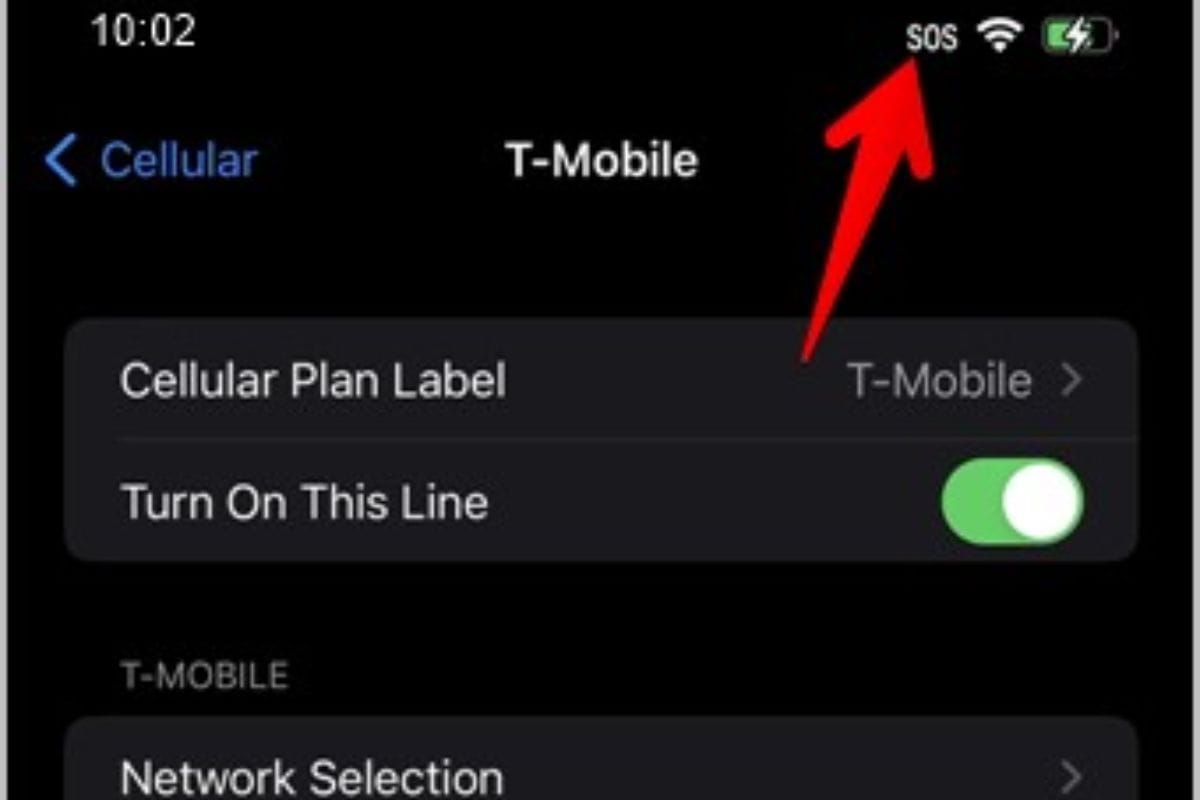Seeing SOS in the top-right corner of your iPhone? Wondering why it’s there? Before worrying, let’s understand what SOS means on iPhone. Let me explain its significance and how to remove it. Let’s begin.
What Does SOS Only Mean on iPhone
The SOS icon signals an issue with your iPhone’s network. It restricts regular calls, texts, and data. Yet, emergency calls like 911 still work. It’s named SOS for this reason. Emergency numbers like 911 (US) or 112 (Europe) are accessible.
On iOS 16, the SOS icon shows in the top-right. In older versions, it’s in the top-left.

Why Is My iPhone Showing SOS?
If your iPhone shows SOS, it’s likely due to poor network coverage.
It might mean your SIM lacks roaming or network changes. Your SIM may be improperly inserted or defective.
To ditch the SOS on your iPhone, fix the cellular connection first. Then, you can use cellular services hassle-free.
Note: The SOS icon appears on iPhone in Australia, Canada, and the U.S.
How to Get Rid of SOS Only on iPhone
If your iPhone displays SOS, here’s how to disable it.
Check Cellular Coverage: Ensure that you’re in an area with cellular coverage. Sometimes, being in areas with poor reception can cause this issue.
Restart Your iPhone: Simply restarting your iPhone can sometimes resolve network connectivity issues. Press and hold the power button until you see the slider appear, then slide it to power off. After a few seconds, press and hold the power button again until the Apple logo appears.
Toggle Airplane Mode: Turning on Airplane Mode then off refreshes your device’s connection. Swipe down from the top-right (iPhone X) or swipe up (earlier models) to access Control Center. Tap the airplane icon to turn on Airplane Mode, wait a few seconds, and then tap it again to turn it off.
Check SIM Card: Make sure your SIM card is properly inserted into your iPhone and hasn’t become dislodged. You may need to remove it and reinsert it to ensure it’s properly seated.
Update Carrier Settings: Sometimes, carrier updates can fix connectivity issues. Go to Settings > General > About. If an update is available, you’ll see a prompt to update your carrier settings. Follow the on-screen instructions to update.
Update iOS: Ensure your iPhone is running the latest version of iOS. Go to Settings > General > Software Update to check for and install any available updates.
Reset Network Settings: Resetting network settings can help with connectivity problems. Keep in mind, it’ll delete saved Wi-Fi networks and passwords. Go to Settings > General > Reset > Reset Network Settings. Enter your passcode when prompted and confirm the reset.
Contact Your Carrier: If those steps don’t help, it could be a network issue. Contact your carrier’s customer support for further assistance.
Check for Hardware Issues: If software fixes fail. your iPhone may have hardware issues. In this case, you may need to contact Apple Support or visit an Apple Store for further assistance.
Final Call:
I hope you get what the SOS symbol means on your iPhone. To understand other symbols in the Control Center. If the SOS text stays on your iPhone, contact your network provider. It might be a SIM card problem.